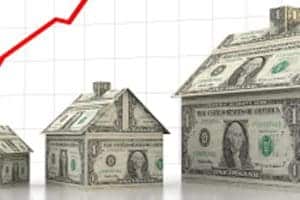If a recession is coming, is rural land a good place to have your money?
The answer does not depend on what your definition of “is” is.
But there’s no one-size-fits-all answer, because much depends on the severity, length and characteristics of any economic pullback.
And everything else depends on the land you’ve bought–its price, financing terms (if any), location, uses and affordability in light of your income, among other factors.
Land bought with an Adjustable Rate Mortgage (ARM) will benefit from a recession’s lower interest rates.
But if you’re laid off during a recession, you may either lose the land or have to sell it a low price to get free of its debt.
Land bought at a too-high price will lose value.
Easy credit, ARMs and speculation hyper-inflate prices in good times; when times sour, they can boil you.
Most types of rural land have not lost value in recent months. The factors that have steadily lifted their worth during the past decade are not mainly speculation and cheap credit.
Second homes that have doubled or tripled in value in the past several years are the exception. They would be front-line casualties in a recession.
The most vulnerable are likely to be those in destination settings, particularly dedicated communities.
The least vulnerable second homes are those within a reasonable driving distance of metropolitan areas.
Undeveloped land that has marginal characteristics—so-so location, limited uses, negatives—will not do well.
But quality land will ride out a recession. Population growth, not speculation, is the flood lifting this boat.
The floor under timberland is its long-term appreciation. That’s why pension funds, endowments, investors and trusts are putting money into it.
Quality land, bought at the right price with sensible financing, should weather a recession better than stocks and many other investment alternatives.
Buying land on time with a long-term fixed rate, coupled with tax-deductible interest and cash potential from a partial sale or rental, is a strategy that floats over turbulence.
The credit crisis we now see is the product of different groups each working the angle of self-interest.
Mortgage borrowers jumped at low-introductory rate ARMS and interest-only loans.
Banks sold their sub-prime loans in packages to investors who bet these risks wouldn’t bite. Banks began seeing packaged, hinky debt as a revenue stream.
Investors—hedge funds, pension funds and insurance companies—borrowed to buy these packages of shaky loans.
When mortgage borrowers started being pinched by higher interest rates, foreclosures and other problems, many sectors of the economy yelled “Ouch.”
Common sense has a way of rearing its ugly head.
Eventually, lenders will start lending again on the basis of genuine value.
Recovery starts with quality borrowing and quality lending.
Good land is a better place to wait out a recession than most others.
This content may not be used or reproduced in any manner whatsoever, in part or in whole, without written permission of LANDTHINK. Use of this content without permission is a violation of federal copyright law. The articles, posts, comments, opinions and information provided by LANDTHINK are for informational and research purposes only and DOES NOT substitute or coincide with the advice of an attorney, accountant, real estate broker or any other licensed real estate professional. LANDTHINK strongly advises visitors and readers to seek their own professional guidance and advice related to buying, investing in or selling real estate.








Add Comment